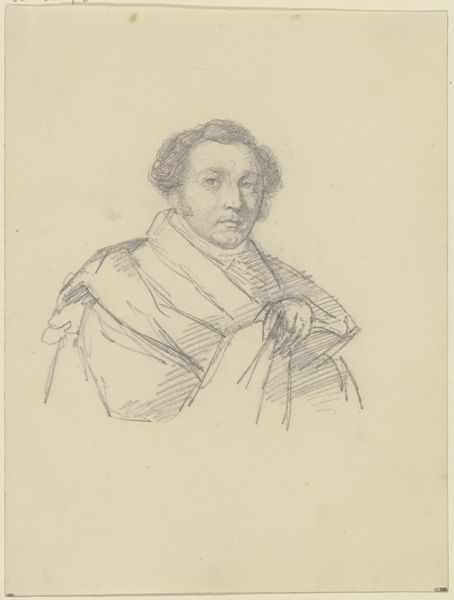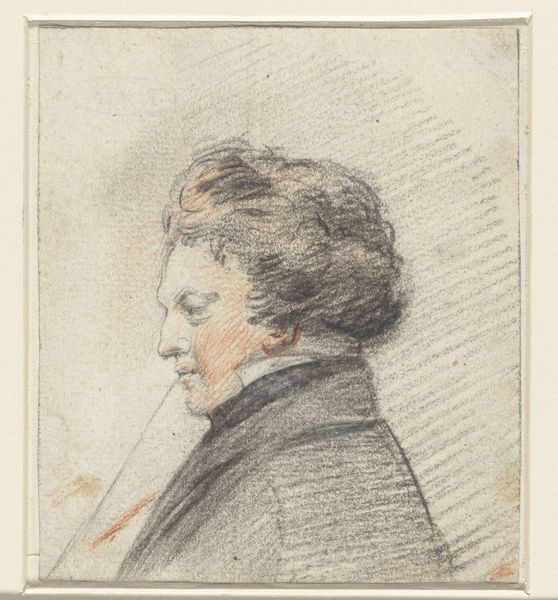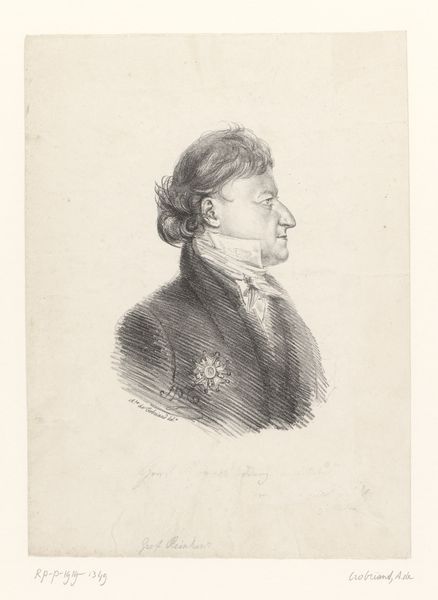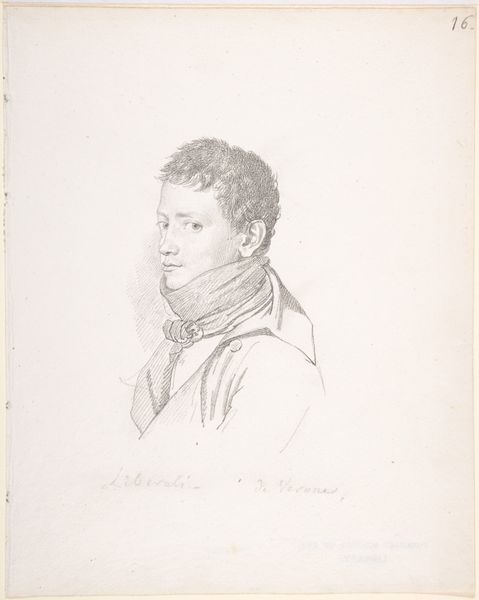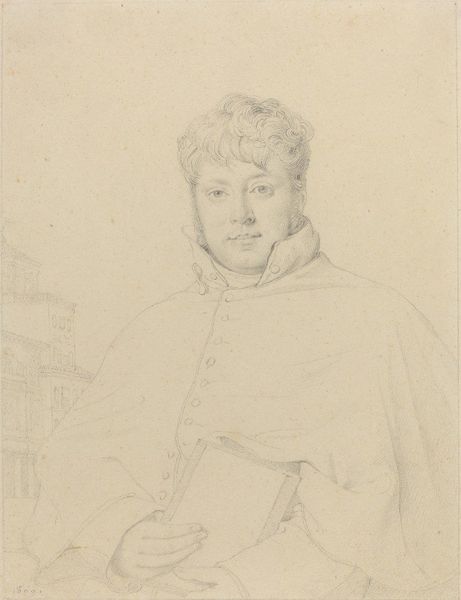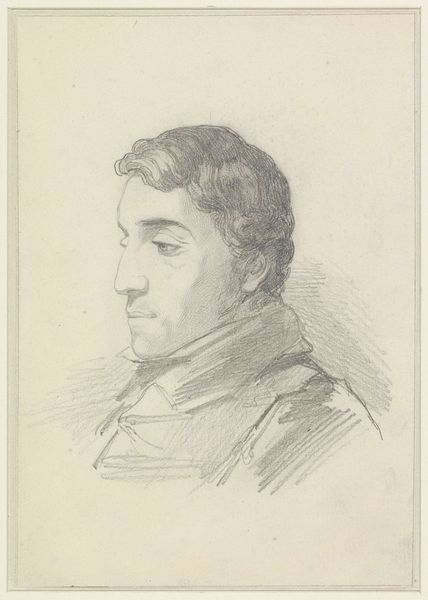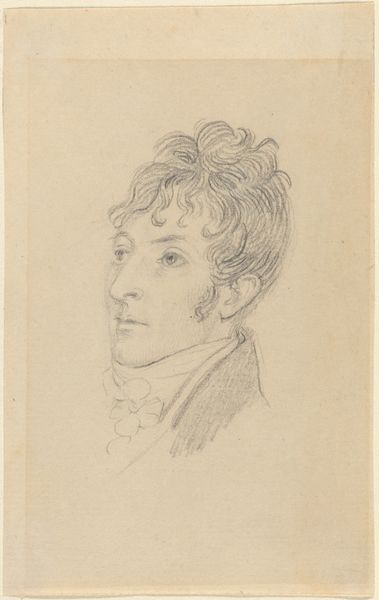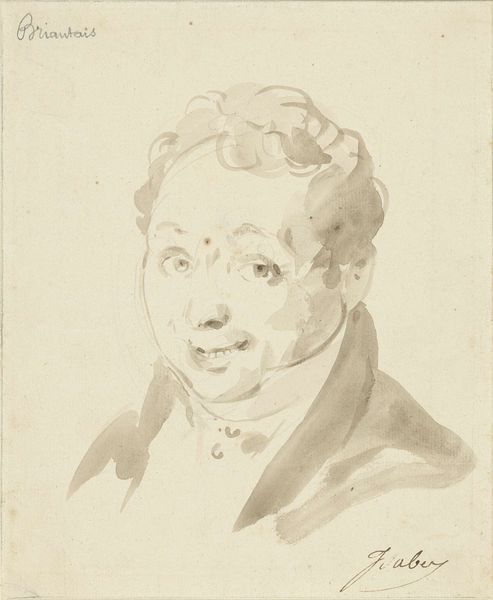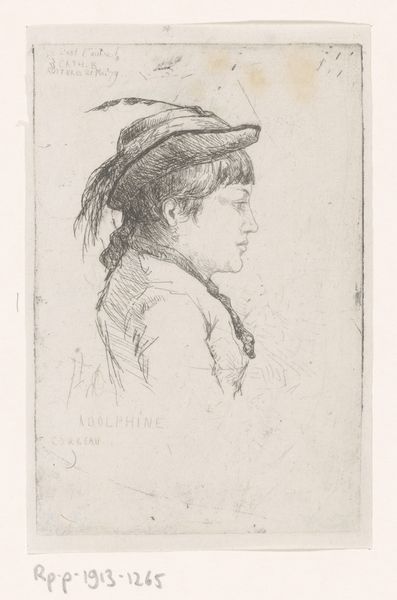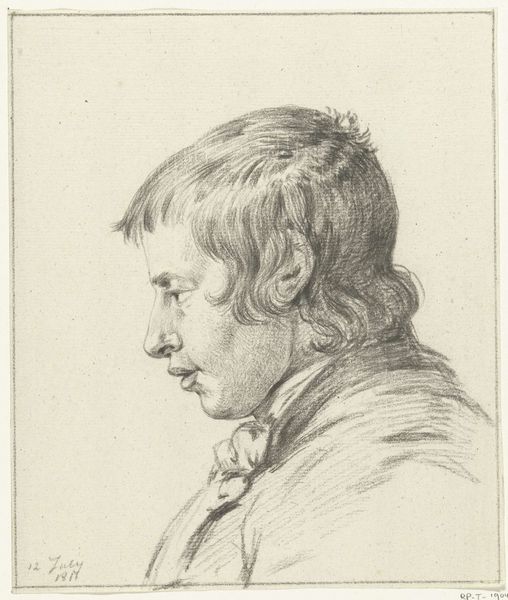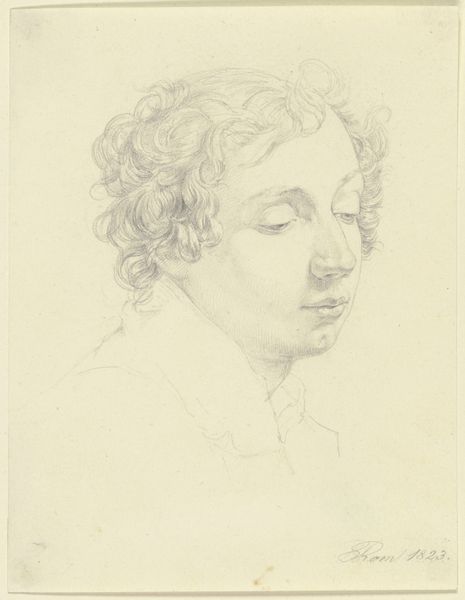
drawing, pencil
#
portrait
#
drawing
#
16_19th-century
#
pencil drawing
#
pencil
#
portrait drawing
#
realism
Dimensions: height 160 mm, width 98 mm
Copyright: Rijks Museum: Open Domain
Curator: What strikes me most immediately is the tentative yet confident touch in this pencil drawing, "Portret van een militair, in profiel," or "Portrait of a Military Man, in Profile," speculated to be created sometime between 1822 and 1874. What's your initial impression? Editor: The vulnerability, actually. I mean, he’s in uniform, theoretically armored, but that soft pencil work kind of melts that away. I see a person, maybe even a bit of anxiety there. Does that resonate at all for you? Curator: It does, particularly when considering military portraits within the power structures they often serve to uphold. Here, we don’t have the pomp and circumstance usually intended to evoke awe. It appears far more human. The medium—a simple pencil drawing—also democratizes the portrayal. It’s far less grand than an oil painting, more accessible. Editor: Exactly! It feels intimate, like a stolen glance rather than a formal declaration. Makes you wonder about the context, right? Was this a sketch done on the fly, or a deliberate attempt to humanize the military image? You know, what were the sociopolitical currents during the work's period that might challenge conventional ideals of masculinity and militarism? Curator: Precisely. We might also analyze how gender is subtly constructed here. The subject presents a soft expression; consider, too, the gentle, almost hesitant lines in his face. Does this offer some degree of resistance against dominant archetypes of stoic soldiers? Also, his relative youth and mild expression seem removed from images depicting seasoned military personnel. Editor: Right. And perhaps he even reflects a changing view of the military itself during that era – a time of significant shifts and conflicts. You know, I can just stare and stare at it! It’s strange because I just see him— I just see his eyes. I am in love with this pencil! Curator: Considering its possible production period, it would fit squarely within Realism, focusing less on idealization and more on the representation of contemporary individuals as they were perceived, at least. It is not merely a representation of a soldier, but an engagement with how that identity intersects with broader cultural ideals and social tensions. Editor: Beautifully said! For me, this drawing is an unexpected peek behind a curtain of uniforms, revealing a quietly compelling individual. Curator: Agreed. It’s through these nuanced readings that we can better understand art's role in not just reflecting, but shaping, societal narratives.
Comments
No comments
Be the first to comment and join the conversation on the ultimate creative platform.
